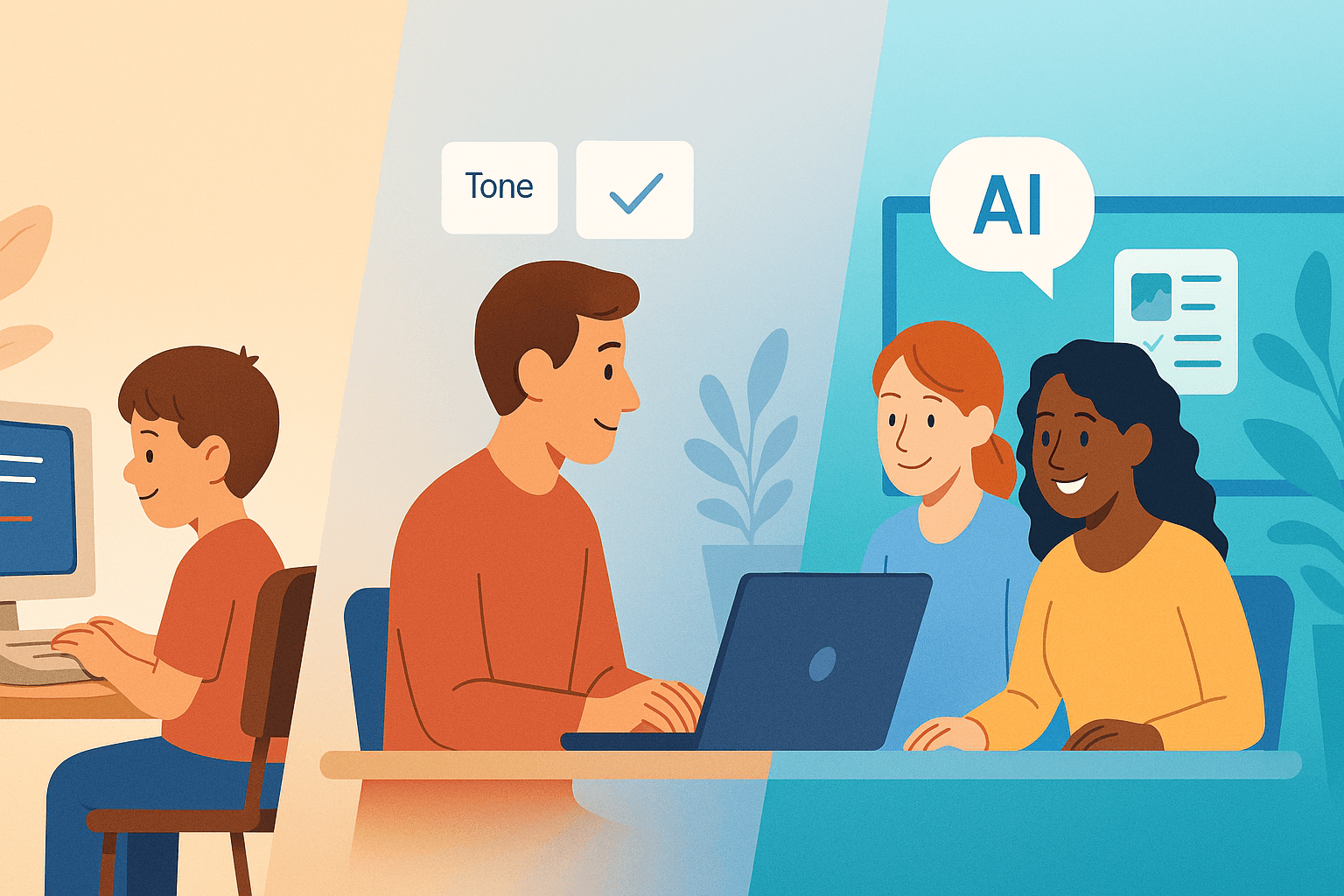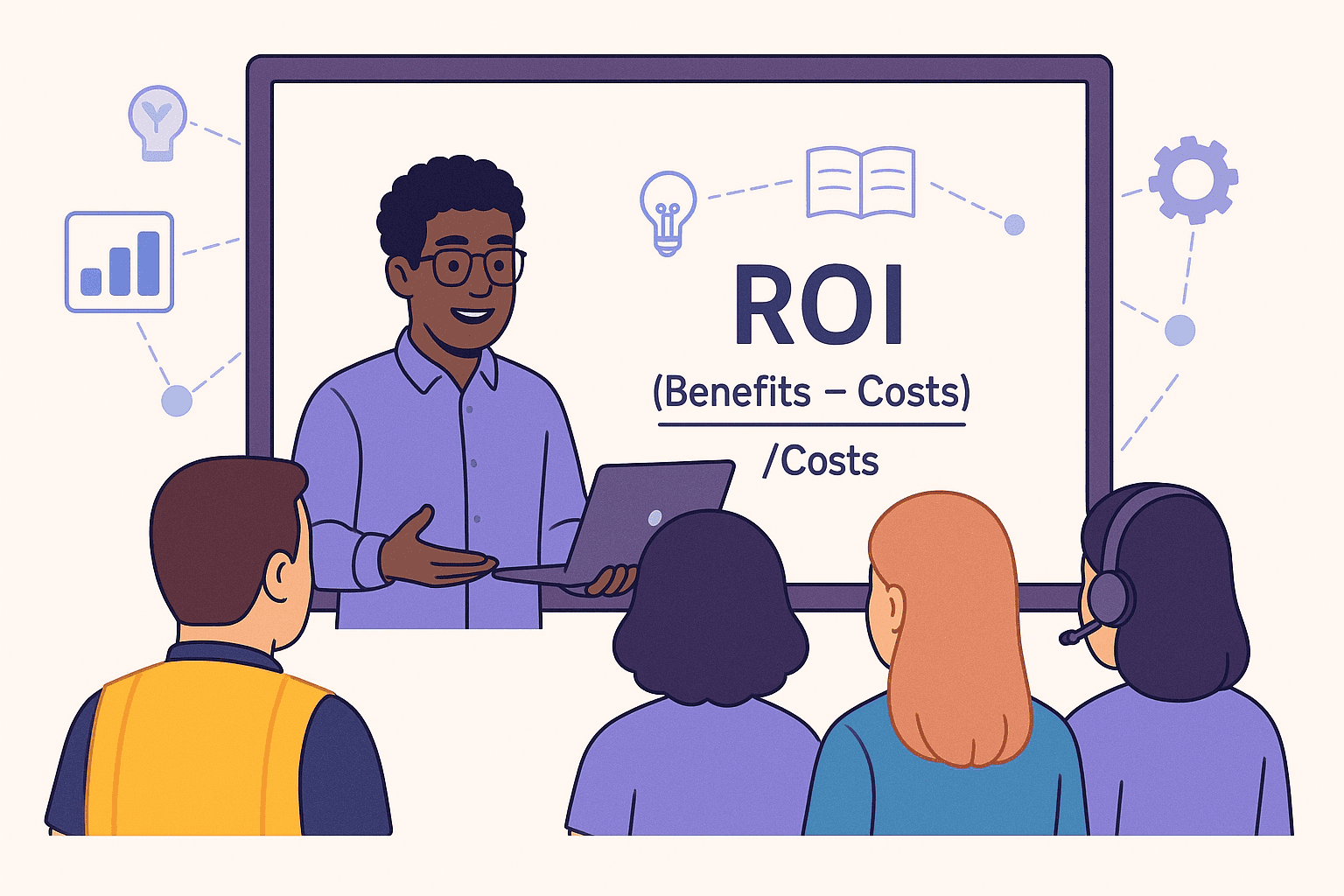2 min
May 5, 2023
Three Strategies for Using Generative AI to Build Killer Teams
Coleman Numbers

Effective teamwork and communication make or break a project. Resultantly, we're always on the lookout for innovative ways to foster collaboration and improve employee development—after all, a team is only as productive as its weakest member.
Enter generative AI—a game-changer in the realm of collaborative learning. In this blog, we'll explore three key areas where generative AI can make a difference: problem-solving sessions, refining feedback, and designing training programs. Along the way, we'll provide concrete examples and action items for you to try.
Using Generative AI in Problem-Solving Sessions
Meaningful collaboration hinges on the ability to solve problems as a team. Generative AI can facilitate this process by analyzing team members' skills, backgrounds, and areas of expertise, creating balanced groups that foster productive brainstorming and problem-solving. In addition, AI can generate real-world scenarios tailored to your industry, adding relevance and context to your problem-solving sessions.
Imagine, for example, your company is working on reducing production costs. AI can create a problem scenario centered on optimizing supply chain logistics, and during the session, it can offer real-time insights and suggestions based on industry best practices. By actively participating in the process, AI helps your team come up with innovative solutions that drive tangible results.
Action item: Leverage AI-driven problem-solving tools like Collaboration.ai’s NetworkOS in your teams to boost creative thinking and collaboration.
Refining and Clarifying Feedback with AI
Clear and constructive feedback is essential for effective teamwork. AI can improve communication between team members by utilizing natural language processing (NLP) technology to analyze patterns and offer suggestions for improvement. Streamlining communication not only prevents misunderstandings but also ensures that feedback is actionable and helpful.
For instance, if a team member provides feedback that is too vague or open to misinterpretation, AI can suggest alternative phrasing or additional context to clarify the message. This feature helps your team communicate more effectively, leading to better collaboration and productivity.
Action item: Implement AI-powered communication platforms that specialize in facilitating feedback and collaboration within teams. Look for tools that cater to the unique needs and dynamics of your organization. Poised, an AI-driven communication coach, might be a good place to start.
AI in Designing a Training Program
AI can assist you in designing targeted training programs by analyzing employee performance data, industry trends, and company goals. With this information, AI can create personalized learning paths that focus on specific skill development and knowledge retention.
Suppose your company plans to invest in training for new project management methodologies. AI can recommend relevant resources, activities, and assessments based on your organization's objectives and employee skill levels. This tailored approach ensures that your training program remains engaging, effective, and results-driven.
Action item: Explore AI-driven learning management tools that can analyze your organization's unique needs and design customized training programs.
Whatever that tailored solution looks like, we recommend making Mindsmith.ai part of it. With context-based, versatile course generation that can transform existing static documents into streamlined training material, we offer a powerful foundation for empowering learners in your organization.
Wrap-Up
As a crucial aside: it's important to weigh the challenges and ethical considerations of AI. Issues like data privacy and potential biases in AI algorithms should be addressed to ensure a smooth and responsible AI adoption process.
This requires intentionality in the way we implement various tools. As mathematician Hannah Fry reminds us in Hello World, her 2018 exploration of pervasive algorithms, “The future doesn’t just happen. We create it.”
Nevertheless, generative AI holds tremendous promise for revolutionizing collaborative learning in the corporate world. By improving problem-solving sessions, refining feedback, and designing effective training programs, AI can help create a more productive and innovative work environment.
The obvious question: how will you and your organization be part of the revolution?
Sincerely,
The Mindsmith Team



